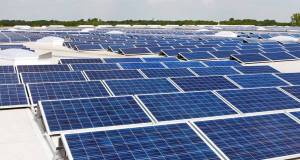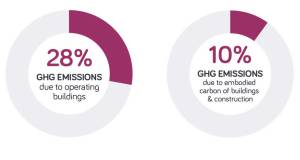- Renewable Energy
- Posted
International Energy Agency accused of blocking switch to renewables
The international body that advises most major governments across the world on energy policy is obstructing a global switch to renewable power because of its ties to the oil, gas and nuclear sectors, a group of politicians and scientists claims today.
In a report to be published today, the Energy Watch experts say wind-power capacity has rocketed since the early 90s and that if current trends continue, wind and solar power-generation combined are on track to match conventional generation by 2025.
Rudolf Rechsteiner, a member of the Swiss parliament who sits on its energy and environment committee, and wrote today's report, said the IEA suffered from "institutional blindness" on renewable energy. He said: "They are delaying the change to a renewable world. They continue touting nuclear and carbon-capture-and-storage, classical central solutions, instead of a more neutral approach, which would favour new solutions."
Today's report compares past predictions about the growth of wind power, made by the IEA and others, with the capacity of wind turbines actually installed.It says: "By comparing historic forecasts on wind power with reality, we find that all official forecasts were much too low."
In 1998, the IEA predicted that global wind electricity generation would total 47.4GW by 2020. This figure was reached in December 2004, the report says. In 2002, the IEA revised its estimate to 104GW wind by 2020 – a capacity that had been exceeded by last summer.
In 2007, net additions of wind power across the world were more than four-fold the average IEA estimate from its 1995-2004 predictions, the report says. "The IEA numbers were neither empirically nor theoretically based," it says.
The IEA's most recent forecast, in its 2008 World Energy Outlook, predicts a fivefold increase in wind energy from 2006-2015, but then assumes a rapid slowdown in deployment over the following decade. The Energy Watch report calls this a "virtual stagnation" and says "no arguments are given why the wind sector should suffer such a crisis by 2015 and after".
The report concludes: "The IEA outlook remains attached to oil, gas, coal and nuclear, and renewables seem to have no chance to reverse this trend. This organisation… has been deploying misleading data on renewables for many years [and is still doing so]."
It adds: "One has to ask if the ignorance and contempt of IEA toward wind power and renewables in general is done within a structure of intent."
Mr Rechsteiner, who says he has investments in a handful of wind turbines, said the IEA routinely drew senior staff from the fossil-fuel industry. "The oil business is very skilful in keeping its energy access exclusive," he says.
The IEA describes itself as an "intergovernmental organisation which acts as energy policy advisor to 28 member countries in their effort to ensure reliable, affordable and clean energy for their citizens". It refused to comment on today's report. The Energy Watch group is run by the Ludwig Bölkow Foundation in Germany.
John Hemming, the Liberal Democrat MP for Birmingham Yardley and a member of the Energy Watch group, said: "The IEA has been complacent, and part of the conventional wisdom that the solution is more oil and gas. The British government relies on the IEA. In the land of the blind, the one-eyed man is king — but the IEA's one eye has a cataract."
Today's report says the number of wind turbines installed over the last decade has grown by 30% annually, and total windpower capacity is more than 90GW – the equivalent of 90 conventional coal or nuclear power stations. It adds that the boom in wind energy is "so far barely touched by any sign of recession or financial crisis".
If current trends continue, the report claims wind capacity could reach 7,500GW by 2025 – making half of all new power projects wind or solar. Conventional power stations could be phased out completely by 2037, it claims.
Werner Zittel of the Energy Watch group, said: "It is time to realise that the many detractors of wind energy have got it wrong. We have seen more than 10 years of unprecedented growth in this sector… This is not about morals or environment but the commercial reality that wind, coupled with hydro, solar, biomass and geothermal energy is not only a rapid and cost-effective alternative, but one that could deliver all our energy requirements within the first half of the century."
(c) The Guardian







